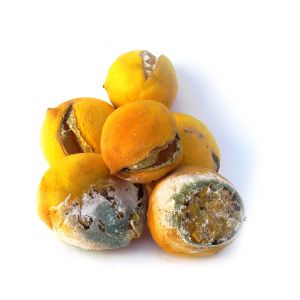What Is Link Rot and How to Prevent It
Key Takeaways
- Link rot refers to the phenomenon when links on a website break, leading to an error page or an incorrect destination. This can negatively impact user experience, potentially leading to lost sales or a negative impression of the site’s professionalism.
- There are several strategies to prevent link rot, including naming pages wisely, regularly checking site stats, using redirects when pages are moved or renamed, being cautious with URL shorteners, using permalinks for blogs or forums, and providing an easy way for site visitors to report broken links.
- While you can’t control external sites that may have broken links leading to your site, you can ensure the links you publish remain active. Regularly using link validators or tools like the W3C Link Checker can help automate this process.
Link rot occurs when links on a web site break. It’s simple: the links stop going to where they’re supposed to go, and the user typically gets some kind of 404 Page Not Found error. Pretty common on the web, isn’t it? There are even some beautiful 404 pages out there to make this mistake more palatable for the lost-on-the-web visitor.
But the result is the same: the visitor can’t find the page they are looking for. This can mean a lost sale, an exit from your site, and an unprofessional impression.
 Of course, there’s not a lot you can do about external sites that have bad links going to your site due to no fault of your own. In many cases, however, you can control whether links remain active once they are published. And you can certainly prevent instances of link rot with the links you’re putting out there yourself. Here’s how:
Of course, there’s not a lot you can do about external sites that have bad links going to your site due to no fault of your own. In many cases, however, you can control whether links remain active once they are published. And you can certainly prevent instances of link rot with the links you’re putting out there yourself. Here’s how:
Name Pages Wisely
If you have large site, it can be virtually impossible to keep track of what’s what if everything is named randomly and disorganized. Use categories that reflect your site structure, and then use a common naming convention for each file, such as the date, keyword and/or abbreviation.
It may also be a good idea, particularly if you have a large site that is not based on a CMS (yes, they still exist!), to keep a master list of file-naming conventions in use, so you have a shortcut to see where a particular link should lead.
Check Your Site Stats
Your analytics software can tell you a lot about broken links. You should be able to see what URL visitors are using to access your site that is resulting in a 404 error. Use this information to fix pages, create redirects and troubleshoot linking problems.
If you use Google Analytics, for example, you can modify your tracking code to include the missing page name and the referring URL in your reports.
Use Redirects
If you reorganize, move or change page names for some reason, use URL redirects to move site visitors from the defunct links to your new page. Keep in mind that even if you update all of your internal links to go to the new page, the same is probably not the case for external sites linking to you. A permanent redirect will fix these broken links, even if the linking sites do not.
Check Your Links Regularly
While verifying that all links are active doesn’t actually guarantee that the site visitor is getting the page they think they are getting, it’s definitely good practice to check all of the links on your site periodically. There are a number of link validators that will allow you to automate this process. Or you can use a tool like the W3C Link Checker.
Be Picky with URL Shorteners
URL shorteners are especially susceptible to link rot. If you use short URLs to link to your pages (and who doesn’t these days?), pick a service with a good track record and check your own links from time-to-time to verify that they work. Or better yet, create your own URL shortener.
Use Permalinks
If you have a blog or forum, enabling permalinks can significantly reduce the possibility of link rot. Think through the selection process when you choose your permalink format (if your platform provides this functionality), so it works for your existing file structure.
Give Site Visitors a Way to Report It
You may be surprised by how willing site visitors are to report broken links … if you make it easy to do. Add an option to report the error right from your 404 page. You can also create a report form that grabs the URL of the page the visitor was trying to reach, so it’s as easy as one or two clicks to report the problem.
What do you do to prevent link rot on your site?
Image credit: Splenetic
Frequently Asked Questions (FAQs) about Link Rot
What are the main causes of link rot?
Link rot occurs when a hyperlink on a website becomes obsolete or non-functional. This can happen for several reasons. The most common cause is when the linked webpage is moved, deleted, or its URL is changed without a redirect being put in place. Other causes include domain name changes, website redesigns, or the website being taken down entirely. In some cases, link rot can also occur due to technical issues such as server problems or software updates.
How does link rot affect SEO?
Link rot can have a negative impact on a website’s SEO. Broken links can lead to a poor user experience, which can result in lower search engine rankings. Additionally, search engines like Google consider the quality and relevance of links when determining page rankings. Therefore, having non-functional links can negatively affect a website’s SEO performance.
How can I prevent link rot?
There are several strategies to prevent link rot. Regularly checking and updating your links is one of the most effective methods. There are also tools available that can automatically check for broken links. Additionally, when moving or deleting a webpage, make sure to set up a redirect to a new page. This will ensure that any links to the old page will still function correctly.
What is the difference between link rot and link decay?
While both terms refer to non-functional links, there is a slight difference between them. Link rot refers to links that are completely broken, while link decay refers to links that still work but lead to outdated or irrelevant content.
How does link rot affect the overall internet ecosystem?
Link rot can have a significant impact on the overall internet ecosystem. It can lead to a loss of information and knowledge, as content that was once accessible becomes unavailable. This can be particularly problematic for academic research, legal documents, and other areas where access to historical information is important.
Can link rot be fixed?
Yes, link rot can be fixed. The first step is to identify the broken links. This can be done manually or with the help of automated tools. Once the broken links have been identified, they can be updated or removed. If a webpage has been moved or deleted, a redirect can be set up to ensure the link still works.
What are some tools to detect link rot?
There are several tools available that can help detect link rot. These include Google Search Console, Screaming Frog SEO Spider, and Broken Link Checker. These tools can automatically scan a website for broken links, making it easier to identify and fix them.
How often should I check for link rot?
The frequency of checking for link rot can depend on the size and complexity of your website. However, as a general rule, it’s a good idea to check for link rot at least once a month. This will help ensure that your website remains user-friendly and SEO-friendly.
Can link rot affect my website’s credibility?
Yes, link rot can affect a website’s credibility. Broken links can lead to a poor user experience, which can make a website appear less reliable or professional. This can potentially lead to a loss of trust among users, which can negatively affect a website’s reputation and credibility.
Is link rot a common problem?
Yes, link rot is a common problem on the internet. Studies have shown that a significant percentage of links on the internet are broken. This is due to the dynamic nature of the web, where content is constantly being added, moved, or deleted. Therefore, it’s important for website owners to regularly check and update their links to prevent link rot.
Alyssa Gregory is a digital and content marketer, small business consultant, and the founder of the Small Business Bonfire — a social, educational and collaborative community for entrepreneurs.
Published in
·Bootstrap·Cloud·Miscellaneous·Open Source·Patterns & Practices·PHP·Programming·Web·June 20, 2014


